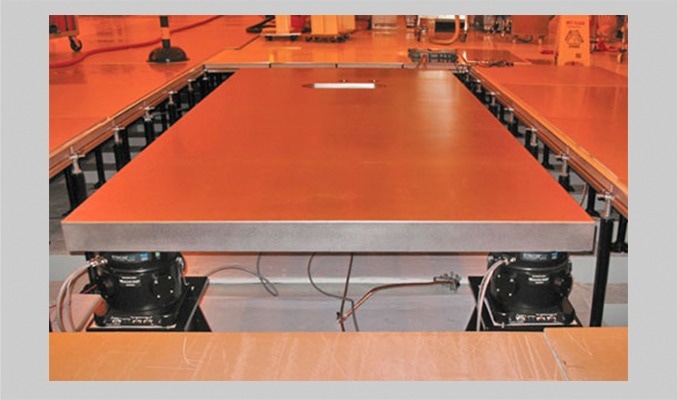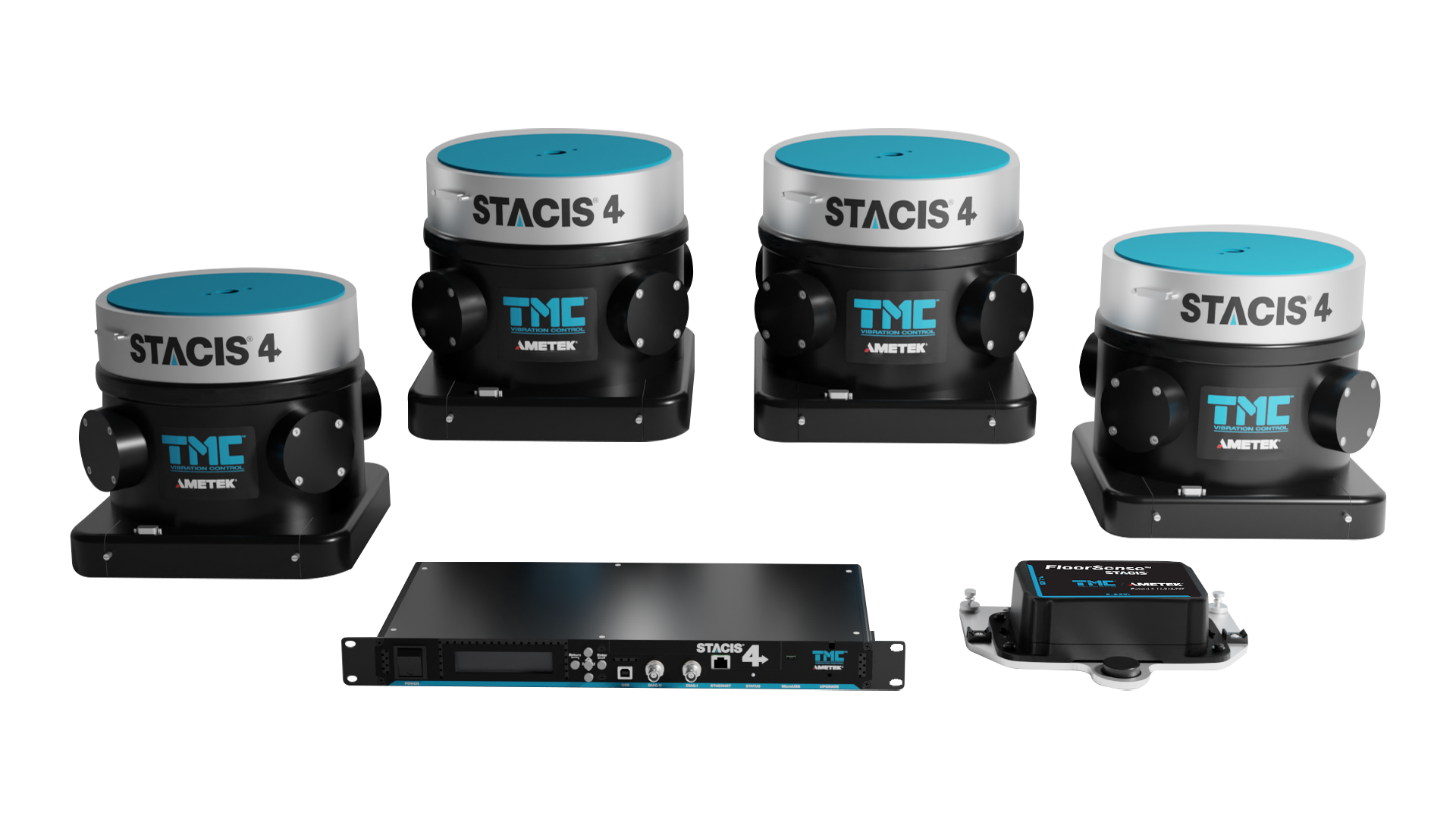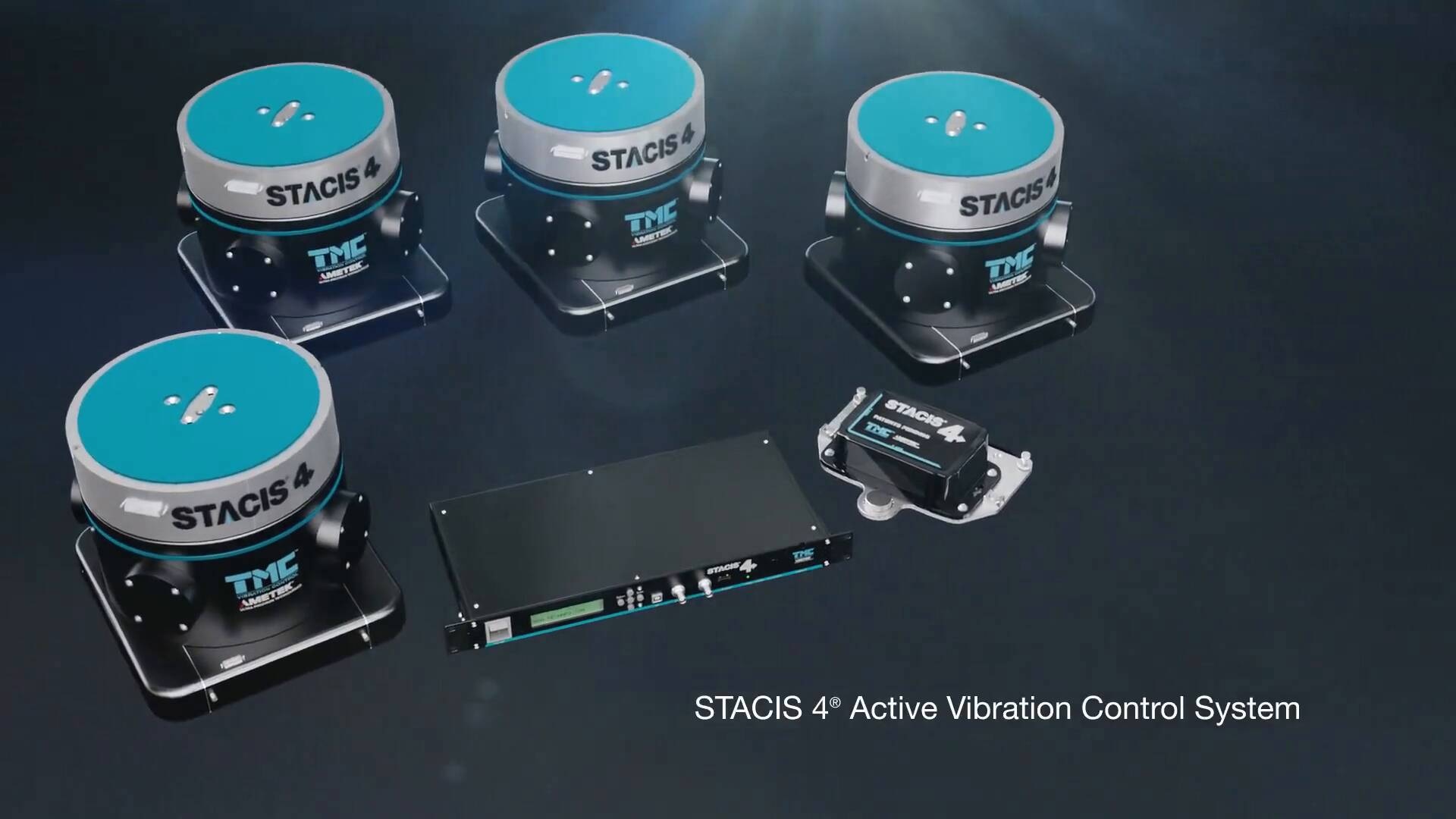 Interview conducted by Olivia FrostJul 6 2023
Interview conducted by Olivia FrostJul 6 2023In this interview, Wes Wigglesworth, the Applications Manager at TMC, talks to AZoM about the importance of active vibration isolation systems in research laboratories.
Please can you provide an overview of your experience and background?
I am currently the Applications Manager at TMC. I have 26 years of experience in Vibration and Noise Control for sensitive scientific instrumentation, advanced metrology and process equipment. My focus for almost 20 years has been Active Vibration Cancellation and its applications supporting Electron Microscopy, eBeam Lithography, optical and AFM-based inspection tools and other highly sensitive applications in life science, materials research, and semiconductor manufacturing.

Quiet Island in a raised floor environment
Image Credit: TMC Vibration Control
What are active vibration isolation systems, and how are these systems used?
Active vibration isolation can best be described as a vibration isolation systems which is “pro-actively” cancelling mechanical vibration rather than just responding to or filtering vibration. Active Isolation utilizes an inertial sensor to monitor the vibration and with a feed-back and/or feed-forward control loop will process that signal to then drive an actuator thus mitigating the measured vibration.
What are some of the facilities in which these systems are employed?
Most commonly these systems are installed in advanced research and engineering laboratories particularly Microscopy Centers and Photonics, as well as nanofabrication and semiconductor fabrication facilities (i.e. FABs). Typical applications are Scanning and Transmission Electron Microscopes, Focused Ion Beam, Mask Alignment, Wafer Inspection and Metrology, e-Beam Lithography, Atomic Force Microscopes, and Interferometry.
Why is vibration isolation so important?
Imagine trying to measure the size of an ant sitting on a leaf blowing in the wind from 10 feet away. Now imagine moving 100 feet away. Even with binoculars and a friend holding a ruler over the ant, it would, at best, be very difficult. But if your friend could hold the leaf steady, at least you have a chance. The technology in the instruments supported by active vibration isolation has advanced tremendously in the last 5-10 years, effectively enabling you to measure the size of each part of the “ant” from a mile away, but only if that “leaf” could be held steady, maybe for only 5 minutes, but sometimes for 24 hours.
Resolution requirements, imaging times, and feature sizes continue to push demands on vibration isolation like never before and will continue to do so as science and technology advances.
Can you explain what makes STACIS 4 the most sophisticated and advanced active vibration isolation system commercially available?
STACIS has always been the most advanced and highest performing active cancellation technology commercially available for low frequency floor and building vibration. TMC has now developed this serial technology with improved electronics and advanced control algorithms to provide 5-10dB (2 to 3 times) improvement over what was previously achieved with STACIS III. And now with the patented FloorSense, STACIS 4 is available in a new format providing up to 60dB improvement at 2Hz.
In real terms, what are some of the advantages it has over other systems?
By providing significantly more vibration cancellation at 10Hz and below, STACIS 4 with FloorSense will enable research and precision instrumentation and their processes in things like drug discovery and semiconductors as this technology is developed for our world in the years to come.
What range of vibrations can STACIS 4 operate over?
STACIS 4 can attenuate building vibration starting as low as 0.2Hz, and can pro-actively attenuate a floor which is already in the VC-E* (include a reference to Colin Gordon published VC Vibration Criterion) range down to well below VC-G. And on noisier floors, we are seeing up to 4 or even 5 levels of reduction on the VC scale.
How does STACIS 4 integrate with systems that already have internal air isolation systems?
Almost all the instruments supported by STACIS have internal air-based isolation systems. A significant advantage of STACIS over alternative solutions for this type of application is the STACIS roughly 100x stiffer than the air isolation inside the instrument. This is extremely important because both stages of isolation are needed, and must independently be optimized, to allow these instruments to be installed in busy, working labs and factories. Simply put, STACIS is designed specifically to support such tools in harsh environments.
How does STACIS 4 build on STACIS III?
One convenience for our existing users and tool designers is that STACIS 4 individual isolator modules are the same size and shape as their predecessor. The controller is the same single-unit rack mountable digital controller as STACIS III. Internal to the isolator and controller is where we have built on, and advanced, the system. Entirely new is the FloorSense module, additional hardware in this version of the system providing by far the highest levels of vibration cancellation in a commercial off-the-shelf solution.

What lessons did you learn via STACIS III that could be employed in its successor?
I think the most important features of STACIS III are that it is an inertial active floor vibration cancellation system with hard-mount serial architecture and piezoelectric actuators. This is truly the foundation to designing the most advanced low frequency isolation system. We have not moved away from this, but rather, as mentioned, built on it.
How easy is the STACIS 4 system to use?
Once installed, it is quite easy. Our users interface with the system via the PC-based Graphical Use Interface or directly at the front of the simple DC-2020 controller. Advanced options include monitoring the output of the system to capture and save real time data.

What developments are on the horizon for TMC Active Vibration Control?
TMC is a solutions provider combining engineering expertise with advanced research and development and a vertically integrated manufacturing with a secured and stable supply chain. We continuously listen to the demands of the industry to develop next generation solutions cost effectively with an eye to the future. We currently have several projects in the pipeline.
About Wes Wigglesworth
Wes Wigglesworth has been with TMC since 1997 and is currently the Applciations Manager of active systems.
Wes has previously held positions in Application Engineering, Sales Engineering, and OEM Account Management in the scientific and technology industry over a period of over 24 years.
He holds a bachelor's degree in Electrical Engineering from Tufts University in Medford, MA.
Disclaimer: The views expressed here are those of the interviewee and do not necessarily represent the views of AZoM.com Limited (T/A) AZoNetwork, the owner and operator of this website. This disclaimer forms part of the Terms and Conditions of use of this website.